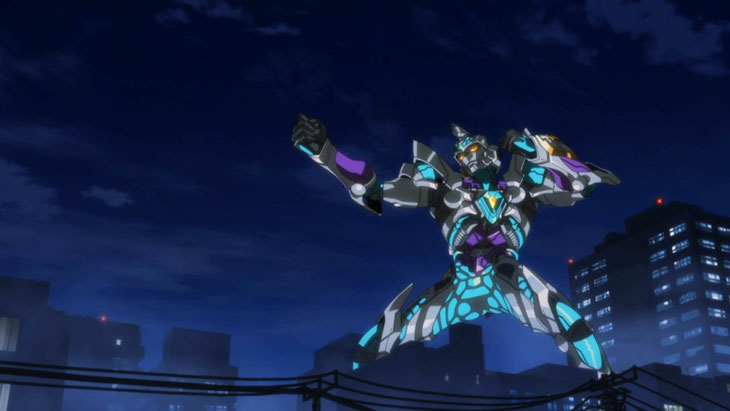
Nostalgia for the works of the early 1990s seems to have settled in because Studio Trigger is celebrating the 25th anniversary of an obscure tokusatsu series from Tsubaraya Productions with its new anime S.S.S.S. Gridman. I am in the strange position of being one of the few Americans who actually remembers the original series (at least the US re-edit of it). So, I of course jumped at the chance to review it, and watching it has reminded me just how strange this concept and the original series it pays homage to really were.
The series’ opening episode reads like a list of common tropes of science fiction action anime. The main character, Yuta, has amnesia. He befriends a girl in his class, Rikka, whose mom runs a junk shop which has the only computer through which Gridman can be communicated with. The main character’s other best friend, Utsumi, is obsessed with superhero shows and could not be happier that giant monsters are attacking if it means a friend of his gets to be a superhero. The main antagonist goes around menacingly staring at the main character for no reason. The most popular girl in the main character’s class, Akane, is an airheaded weirdo who says cryptically meaningful (maybe?) things to the protagonist. A giant monster is summoned for no apparent reason, and suddenly Yuta and his crew figure out how to contact Gridman and have Yuta fuse with him to fight the monster, who is some kind of circuitry construct.
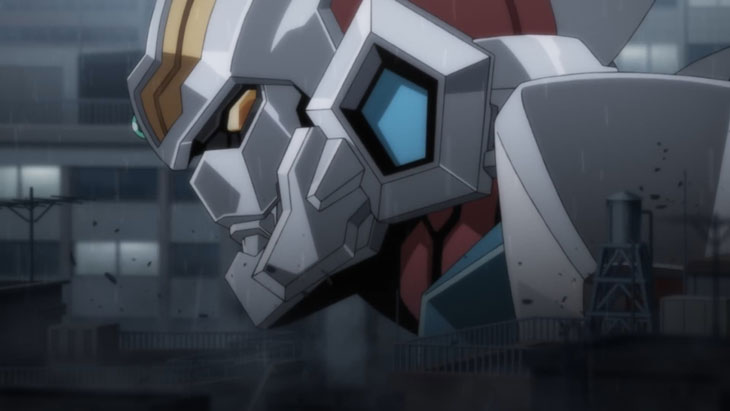
This is one of the few times that I feel that explaining the plot of the original series is necessary to even attempt to understand the plot of the new one. In Denko Chojin Gridman, a trio of computer whiz high school students create their own superhero computer program. An interdimensional police officer named Gridman merges with the program and then contracts with one of the teens to become Gridman in order to fight an evil program called Kahn Digifer who was created by an edge lord misanthrope. The evil program brings computer virus monsters to life and Gridman must fight them to save the city.
You see why I felt the need to mention that? For a relatively simple super hero vs giant monster story, the backstory is incredibly weird and overly complicated. Add on top of that the types of generic mystery-plot anime tropes that just further muddy the waters, and you have the potential for a complete mess of a narrative. Luckily, Trigger seems to have reined in some of its worst eccentricities so far (perhaps as a response to the negative reaction to series like Darling in the FRANXX), and the characters seem to be mostly likable and relatable aside from the obvious weirdo. There isn’t a whole lot else to say about the plot at this point since the series is operating in mystery mode currently. Hopefully Trigger will simply bring its vibrant, distinctive direction to this franchise and not any of its laughably ludicrous plot machinations.
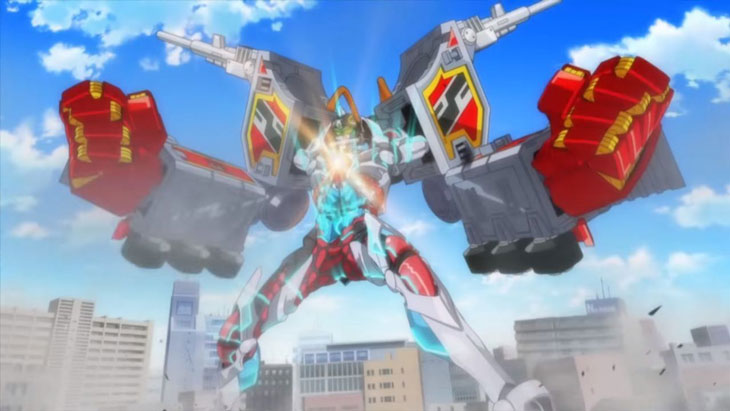
One huge benefit to this series over the original is the action scenes. While I have no ill will towards Tsubaraya Productions, the studio that created Ultraman and whose founder designed Godzilla, I can safely say that the show’s action scenes have not aged well. As cool as the Gridman design is, most of the fight scenes were boring, poorly lit cityscapes done up to look like computer hardware and the choreography consisted of Gridman slowly and awkwardly fighting one monster by himself. To some extent, that awkward one-on-one wrestling persists, but effective uses of a dynamic camera and a fluid mix of 3-D and 2-D animation makes it more interesting to watch. Also, the original series was known for overuse of slow-motion cinematography, which may have helped the audience see what was happening at the time, but now it makes the action look sluggish and poorly planned. Trigger thankfully does away with all of that and utilizes the absurdity of its monster designs and their powers to the fullest.
A Few Rambling Thoughts:
- I am fairly certain that the reason this series has the “S.S.S.S.” in its title is to reference the Americanized version of Gridman called Superhuman Samurai Syber Squad. No that is not misspelled. The show was just that 90s.
- On a strange note, the Americanized version of Gridman was a creative collaboration between the American distributor, DiC Entertainment, and the original Japanese creators, Tsubaraya Productions. That’s actually fairly unusual considering Superhuman Samurai Syber Squad was clearly made to ride the coat tails of Saban’s Mighty Morphin’ Power Rangers.
- Charmingly, they also call the enemy monsters in the new series kaiju, which is the general Japanese term for giant monsters, but it is hardly ever used to refer to them.
- When the monster first appears, Utsumi makes a joke about how if this was the Ultra series the monster would have an obvious weakness. This is probably a reference to Ultraman, Tsubaraya Productions’ biggest franchise.

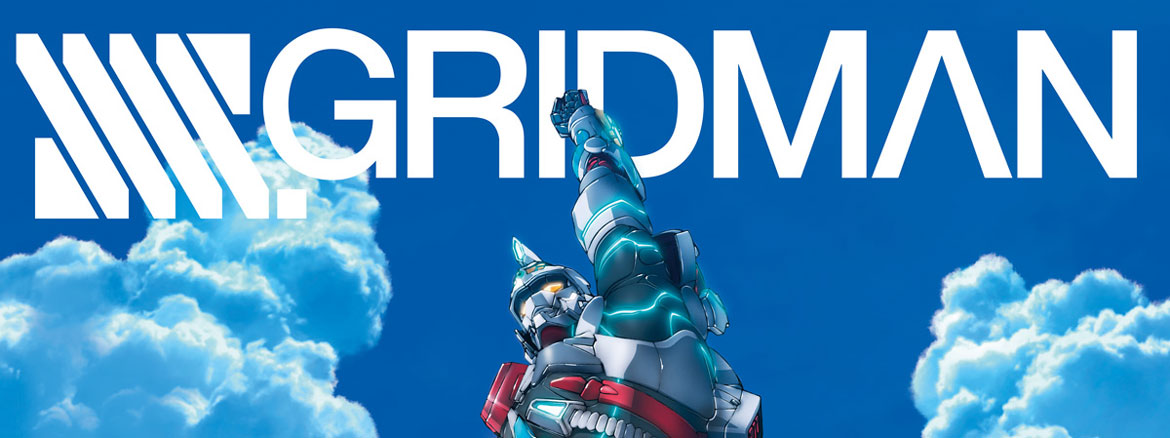
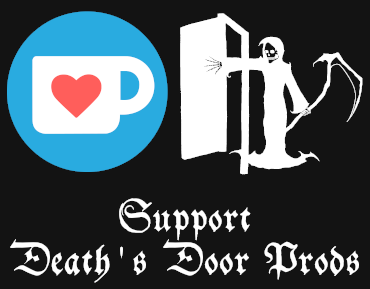

Add comment